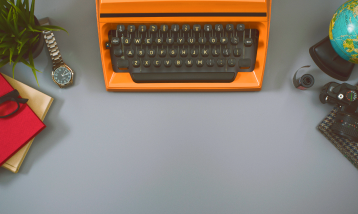
How Artificial Intelligence (AI) and Machine Learning (ML) Are Influencing Industrial Design

28, January 2025
As the definition goes, industrial design is a creative field that focuses on designing products for mass production, taking into account both their aesthetic appeal and functionality. It bridges the gap between art and engineering to produce products that enhance people's lives through thoughtful design.
The goal is to create items that are not only useful but also visually pleasing and user-friendly, while taking into account factors like manufacturing feasibility and user needs. For the past two decades, Artificial Intelligence (AI) and Machine Learning (ML) are the powerful forces which are reshaping the creative process in the forever-evolving landscape of design. We'll look at how AI and ML are impacting product design in this blog and how they can assist designers in coming up with more creative and effective solutions.
Role of AI in Industrial Design
The technology known as artificial intelligence makes it possible for machines to carry out operations like learning, reasoning, and sensing that call for human intelligence. Machine learning algorithms are one of the primary ways AI is changing product design. Hence, AI and ML and intertwined.
Large data sets can be analyzed by these algorithms, which can then be used to identify trends and patterns that may help with product creation. A machine learning system might, for instance, examine thousands of product reviews to identify the attributes that customers value most. Designers may find this useful in determining which features to incorporate into a new product.
- Automating repetitive design tasks to enhance productivity- AI in design frees designers from tedious work by automating tasks like file organization, code generation, and image resizing. For example, AI-powered design tools quickly produce several design iterations according to user preferences, which in turn saves time, money, and effort.
- Predictive analytics for understanding consumer preferences- By analyzing large datasets, trends, and user behavior, AI in design makes predictive insights possible. To identify trends, comprehend consumer needs, and foresee future design preferences, industrial designers use predictive analytics.
- P. Tsang and C. K. M. Lee of The Hong Kong Polytechnic University did an extensive research on this subject and published a paper titled ''Artificial intelligence in industrial design: A semi-automated literature survey.'' They have clarified that the application of AI to industrial design, which comprises enhancing the usefulness, value, and appearance of goods to optimize client satisfaction, has not yet been thoroughly explored.
Machine Learning as a Game-Changer
Let's take a trip through this process, figuring out the connections and coming up with methods to comprehend how AI and ML function in industrial design. Machine learning programmers are highly sought after in the industry due to their innovative approach and the way they have made machines more and more intelligent.
- Customizing designs based on user behavior and feedback- Through the analysis of user data and behavior, AI personalizes design experiences. AI-driven customization in UI/UX design enhances user experience and engagement by suggesting items, layouts, or content based on user preferences.
By evaluating user feedback, making suggestions for enhancements, or even anticipating possible problems with designs, AI-powered software makes it easier to collaborate. AI-integrated platforms provide real-time feedback, which helps teams work together more efficiently and iterate designs more easily. - Real-time problem-solving in prototypes through machine learning algorithms- In the agile framework of software development, when sprints for machine learning modules are run, the changes can be made instantaneously. The client can add new data sets to experiment and can achieve instant results.
Furthermore, by evaluating user input from several sources, such as social media, questionnaires, surveys, face-to-face interactions, or telephonic feedback, ML expedites user testing.
Benefits of AI and ML in Industrial Design
- Increased efficiency and reduced time-to-market
- Enhancing precision and reducing human error
- Sustainable design solutions through optimized material usage
Conclusion
Avantika University boasts of a state-of-the-art facility, well-equipped library, comprehensive lab spaces, and world-class faculty. It provides very good education compared to any good Industrial design college in Mumbai.
If you desire to do Bachelor of Design (B.Des) in Industrial Design or Master of Design (M.Des), you have come to the right place. The placement services provided by Avantika University will help you become a thorough professional in this field.

